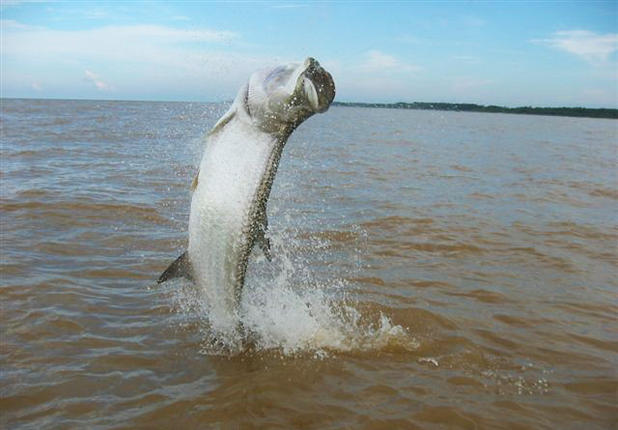How to Catch a Tarpon on a Fly Rod

Tarpon is a large fish that inhabits the Atlantic and Indo-Pacific oceans. It grows about 5-8 feet and weigh up to 40-140 kg. Catching a Tarpon on a fly rod can be an uphill task as most of the fishermen catch them on live bait. However, if you are following the right procedure then your chances to be successful are very high.
Tarpon belongs to the category of fish that move swiftly but if you know how to locate them then all you need is a saltwater fly rod, floating fly line and flies to catch Tarpon.
Instructions
-
1
Lock the area:
First of all, you should find out their position and then lock the area to make this exercise fruitful. Tarpons look for shrimp and crabs in deeper section of tides so you should locate the section of water where they are eating. However, you must be careful during this time as Tarpon can migrate quickly if there is any sign of danger. -
2
Tempt them wisely:
You will have to throw a fly close to the Tarpons as they will not go after your bait especially when there is plenty of food in the water. To do this in perfect manner, you should read their shadows and place your fly where lots of Tarpons are feeding hurriedly. Their fins, which often come out of water, can also be helpful to find out the best place for your fly. -
3
Move tactfully:
Now, when you have found a group of Tarpons, you should cut the motor and wade so that there is no noise to alarm them. It may take time but ultimately you will be able to get close to the Tarpons and place your bait perfectly. -
4
Cast your fly:
Your next step will be to throw your fly as close as possible. You must have a fly line with at least 200 yards of backing. Try to use fly line to get close but if it is not possible then push your boat close to them. Moreover, you should be practiced enough to avoid hitting the pod with your line. -
5
Make them see the fly:
You must draw your fly in front of the Tarpon otherwise it will be a futile exercise. Remember, they will ambush the fly only if they are able to see it clearly. That is what makes this method more difficult than catching a fish with live bait. -
6
Strike back:
When you feel a thud, it is the right time to strike back so pull up a couple of times and then be ready for a long fight.





